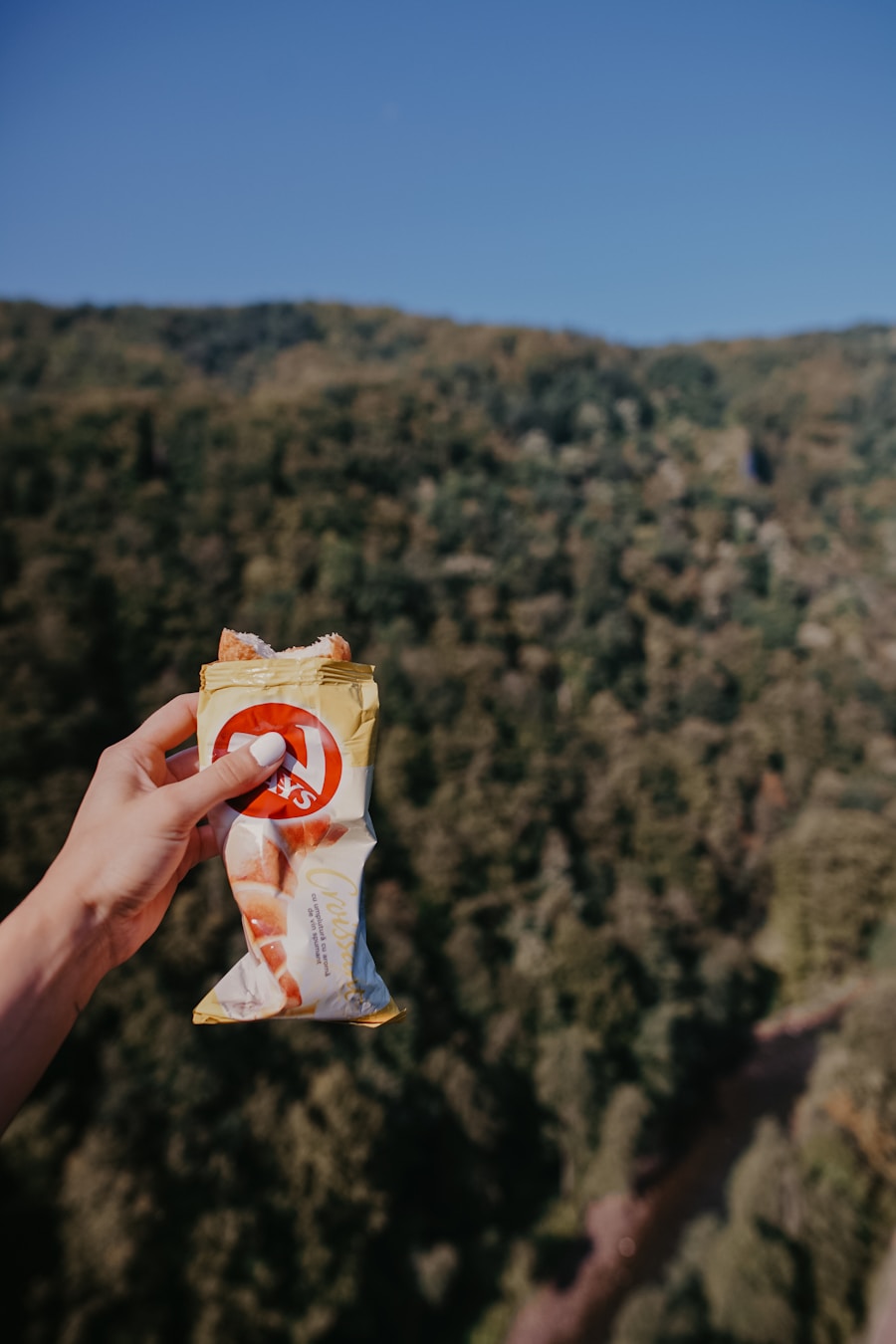Hiking is not merely a leisurely stroll through nature; it is a complex physical activity that engages multiple muscle groups and requires significant energy expenditure. The science of caloric burn during hiking is rooted in the principles of energy metabolism, which involves the conversion of food into usable energy for the body. When a person hikes, their body relies on aerobic metabolism, which utilizes oxygen to convert carbohydrates and fats into energy.
This process is influenced by several factors, including the intensity of the hike, the individual’s body weight, and the duration of the activity. Research indicates that hiking can burn anywhere from 430 to 550 calories per hour for an individual weighing around 160 pounds, depending on the terrain and pace. This caloric expenditure can increase significantly with added weight, such as a backpack filled with supplies.
The metabolic rate during hiking is also affected by the incline of the trail; steeper inclines require more energy, leading to higher caloric burn. The combination of cardiovascular endurance and muscular strength required for hiking makes it an effective exercise for those looking to manage their weight or improve their overall fitness levels.
Key Takeaways
- Hiking can burn a significant amount of calories due to the varied terrain and elevation changes, making it an effective form of exercise for weight management.
- Hiking can burn more calories than other forms of exercise such as walking or cycling, especially when the terrain is challenging.
- Factors such as body weight, pack weight, speed, and incline can influence the amount of calories burned during hiking.
- To maximize caloric burn while hiking, focus on maintaining a brisk pace, carrying a weighted pack, and incorporating interval training on steep inclines.
- Terrain and elevation play a crucial role in caloric expenditure during hiking, with uphill climbs and uneven surfaces requiring more energy and thus burning more calories.
Comparing Caloric Expenditure of Hiking to Other Forms of Exercise
When comparing hiking to other forms of exercise, it becomes evident that it holds its own in terms of caloric expenditure. For instance, activities like running or cycling are often touted for their high caloric burn rates; however, hiking offers unique advantages that make it a compelling choice for many individuals. While running can burn approximately 600 to 800 calories per hour, it may not be suitable for everyone due to its high-impact nature.
In contrast, hiking provides a lower-impact alternative that can be enjoyed by people of varying fitness levels. Moreover, hiking can be more sustainable over longer periods compared to other high-intensity workouts. Many individuals find that they can hike for hours while maintaining a steady pace, whereas running may lead to fatigue more quickly.
Additionally, hiking allows for a connection with nature that can enhance the overall experience, making it more enjoyable and less of a chore than traditional gym workouts. This enjoyment factor can lead to longer durations of activity, ultimately resulting in greater caloric expenditure over time.
Factors that Influence Caloric Burn During Hiking

Several factors influence how many calories are burned during a hike, making it essential for individuals to consider these elements when planning their outdoor excursions. One primary factor is body weight; heavier individuals tend to burn more calories than lighter individuals during the same activity due to the increased energy required to move a larger mass. For example, a person weighing 200 pounds may burn approximately 600 calories per hour while hiking at a moderate pace, compared to someone weighing 150 pounds who might burn around 450 calories in the same timeframe.
The intensity of the hike also plays a crucial role in caloric burn. Hiking at a brisk pace or tackling steep inclines significantly increases heart rate and energy expenditure. Additionally, the type of terrain can affect how many calories are burned; rocky or uneven trails require more effort and stability, leading to higher energy demands.
Weather conditions can also impact caloric expenditure; hiking in hot or humid conditions may lead to increased sweating and energy use as the body works harder to regulate temperature. Understanding these factors can help hikers tailor their experiences to maximize caloric burn.
Tips for Maximizing Caloric Burn While Hiking
| Tip | Caloric Burn |
|---|---|
| Choose challenging terrain | 400-700 calories/hour |
| Use trekking poles | 20% increase in caloric burn |
| Carry a backpack | 200-300 calories/hour |
| Stay hydrated | Helps maintain energy levels |
| Take shorter, faster steps | Increases caloric burn |
To maximize caloric burn while hiking, individuals can implement several strategies that enhance the intensity and duration of their outings. One effective method is to incorporate interval training into hikes. This involves alternating between periods of brisk walking or climbing steep sections and slower-paced walking on flat terrain.
This approach not only elevates heart rate but also engages different muscle groups, leading to increased caloric expenditure. Another way to boost caloric burn is by adding weight through a backpack or weighted vest. Carrying additional weight forces the body to work harder, thereby increasing energy expenditure.
However, it is essential to ensure that the added weight is manageable and does not compromise safety or comfort during the hike. Additionally, choosing trails with varied terrain—such as hills, rocks, and streams—can provide natural resistance and challenge the body further, leading to greater caloric burn.
The Importance of Terrain and Elevation in Caloric Expenditure
Terrain and elevation are critical components that significantly influence caloric expenditure during hiking. Steep inclines require more effort from the cardiovascular system and engage larger muscle groups, resulting in higher energy demands. For instance, hiking up a mountain trail not only elevates heart rate but also activates muscles in the legs, core, and even upper body if using trekking poles.
Conversely, flat trails may not provide the same level of challenge and thus result in lower caloric burn. The type of terrain also plays a role in how many calories are burned. Rocky or uneven surfaces require greater balance and stability, which engages additional muscles and increases overall energy expenditure.
Hiking through varied landscapes—such as forests, hills, or along rivers—can provide both physical challenges and mental stimulation, making the experience more rewarding while enhancing caloric burn.
How Hiking Can Lead to Increased Metabolism and Continued Caloric Burn

Hiking not only burns calories during the activity itself but can also lead to an increased metabolic rate post-exercise—a phenomenon known as excess post-exercise oxygen consumption (EPOC). After an intense hike, the body continues to consume oxygen at an elevated rate as it works to restore itself to pre-exercise levels. This process can result in additional caloric burn for hours after completing the hike.
Moreover, regular hiking can contribute to long-term metabolic adaptations. As individuals engage in consistent physical activity like hiking, their bodies become more efficient at burning calories even at rest. This adaptation occurs due to increased muscle mass and improved cardiovascular fitness, both of which enhance resting metabolic rate (RMR).
Consequently, incorporating hiking into a regular fitness routine can lead to sustained weight management and improved overall health.
The Mental and Emotional Benefits of Hiking for Weight Management
Beyond its physical benefits, hiking offers significant mental and emotional advantages that can support weight management efforts. Engaging with nature has been shown to reduce stress levels and improve mood, which can be particularly beneficial for individuals struggling with emotional eating or weight-related anxiety. The calming effects of natural surroundings can promote mindfulness and help individuals develop a healthier relationship with food and exercise.
Additionally, hiking provides opportunities for social interaction when done with friends or family. These social connections can enhance motivation and accountability in maintaining an active lifestyle. Sharing experiences on the trail fosters camaraderie and support among hikers, making it easier to stick with fitness goals over time.
The combination of physical activity and social engagement creates a holistic approach to weight management that addresses both body and mind.
Incorporating Hiking into a Balanced Exercise and Nutrition Plan
To fully harness the benefits of hiking for weight management and overall health, it is essential to incorporate it into a balanced exercise and nutrition plan. This means not only scheduling regular hikes but also complementing them with other forms of exercise such as strength training or flexibility workouts. A well-rounded fitness regimen ensures that all aspects of physical health are addressed while preventing overuse injuries associated with repetitive activities.
Nutrition plays a crucial role in supporting an active lifestyle as well. Consuming a balanced diet rich in whole foods—such as fruits, vegetables, lean proteins, and whole grains—provides the necessary fuel for hiking adventures. Proper hydration is equally important; staying well-hydrated before, during, and after hikes helps maintain energy levels and supports recovery processes.
By integrating hiking into a comprehensive exercise and nutrition strategy, individuals can optimize their health outcomes while enjoying the myriad benefits that this outdoor activity has to offer.
If you’re planning on embarking on some spring hiking adventures in 2025, you may be wondering how many calories you’ll burn during your treks. According to a recent study, hiking can burn anywhere from 430 to 550 calories per hour, depending on factors such as your weight and the intensity of the hike. For more tips on staying energized during your outdoor excursions, check out this article on the best travel trailer batteries to power your adventures.
Love travel? Join Our Facebook Community For More Tips.
FAQs
What is hiking?
Hiking is a form of outdoor physical activity that involves walking on trails or paths in natural environments such as forests, mountains, or countryside.
How many calories does hiking burn?
The number of calories burned while hiking depends on various factors such as the individual’s weight, the intensity of the hike, and the terrain. On average, a person can burn between 430-550 calories per hour while hiking.
What factors affect the number of calories burned while hiking?
Factors that can affect the number of calories burned while hiking include the individual’s weight, the speed and intensity of the hike, the incline and terrain of the trail, and the presence of a backpack or other gear.
Is hiking a good way to burn calories and lose weight?
Yes, hiking can be an effective way to burn calories and contribute to weight loss. It provides a full-body workout and can be a more enjoyable alternative to traditional forms of exercise.
Are there any health benefits to hiking?
Hiking offers numerous health benefits, including improved cardiovascular fitness, muscle strength and endurance, stress reduction, and mental well-being. It also provides an opportunity for exposure to nature and fresh air.
